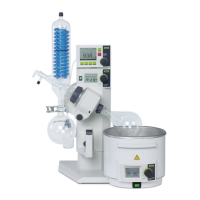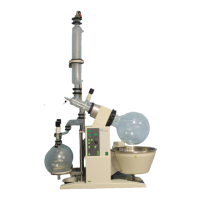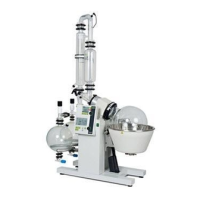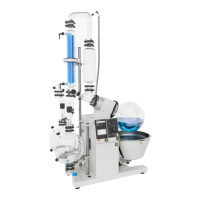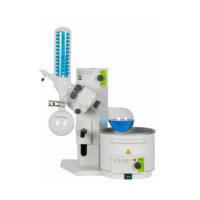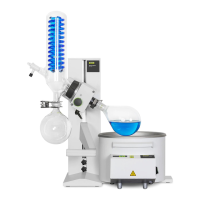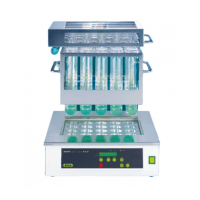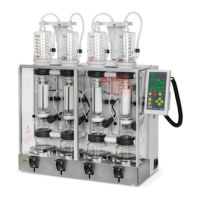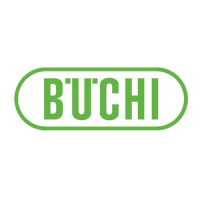
Do you have a question about the Buchi R-215 and is the answer not in the manual?
| Type | Rotary Evaporator |
|---|---|
| Heating Bath | Yes |
| Rotation Speed | 20 - 280 rpm |
| Lift | Manual or Motorized |
| Heating Bath Material | Stainless Steel |
| Material | Stainless steel, glass |
| Power Supply | 220-240 V / 50-60 Hz |
| Bath Temperature | 20 to 180 °C |
| Evaporation Flask Capacity | 1 - 5 L |
| Glassware | Standard |
| Weight | Approx. 25 kg (depending on configuration) |
Explains the meaning of WARNING, ATTENTION, and NOTE symbols used in the manual.
Discusses residual dangers and manufacturer's responsibilities regarding instrument safety.
Details hazards like hot surfaces, electrical hazards, and implosion risks from glassware.
Covers hazards related to solvent properties, such as peroxide formation and flammability.
Explains the basic principle of operation for single-step distillations using vacuum and rotation.
Illustrates the functional principle with a V assembly, detailing evaporation, rotation, and condensation areas.
Identifies and describes the various control elements on the Rotavapor unit.
Details how the Rotavapor and vacuum controller can be connected for automated operation.
Provides guidelines for selecting a suitable installation location for the instrument.
Details how to safely connect the instrument electrically, emphasizing earthing.
Outlines the steps for performing functional tests, including vacuum tightness and rotation speed.
Covers how to adjust settings for the heating bath, including temperature control.
Details the procedure for setting the desired temperature for the heating bath.
Explains how to switch the heating bath between water and oil bath modes.
Describes how to switch the heating bath from oil bath mode back to water bath mode.
Guides on how to select and lock the set temperature for the heating bath.
Explains how to modify or delete the set temperature for the heating bath.
Details how to adjust the immersion angle of the evaporating flask for optimal performance.
Explains how to use the quick-action jack to safely move the flask into and out of the bath.
Provides guidance on selecting optimal conditions for distillation, including temperature and vacuum.
Outlines the steps for performing a distillation operation.
Offers tips on how to optimize distillation parameters for better results.
Describes troubleshooting steps when the distillation process slows down or stops unexpectedly.
Lists common instrument malfunctions, their causes, and corrective actions.
